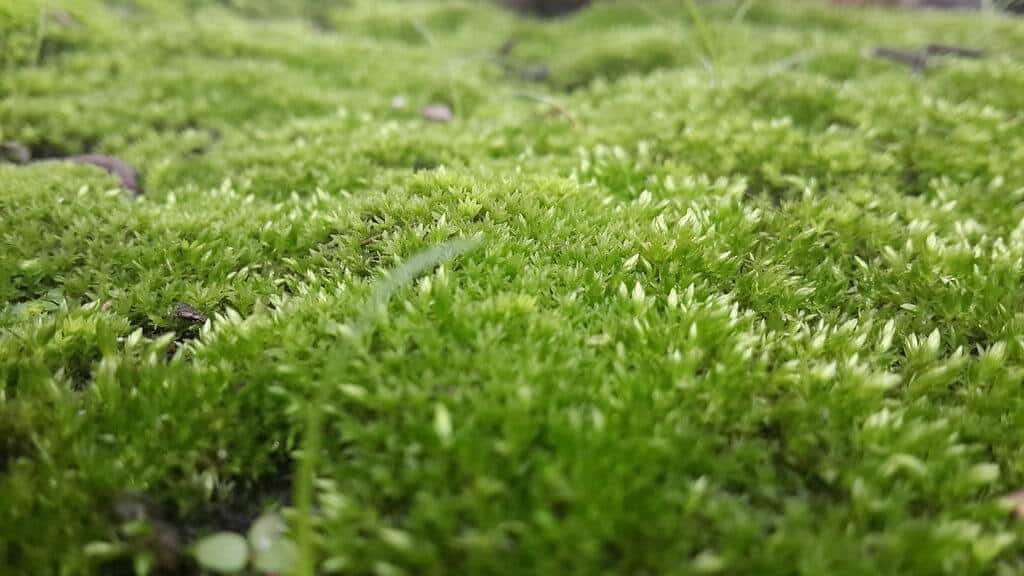Moss in Your Lawn: A Comprehensive Guide to Understanding and Eliminating It

Moss, a small, non-vascular plant, belongs to the division Bryophyta. Often found in damp or shaded areas, it lacks true roots, stems, and leaves. This ancient greenery plays a vital role in the ecosystem by aiding in soil erosion control and providing habitat for small organisms.
Mosses thrive in conditions where other plants struggle, making them resilient and adaptable. Their ability to absorb water directly through their leaves sets them apart from higher plants. Despite their simplicity, mosses are intricate and contribute to the overall biodiversity of an environment.
Moss Structure and Reproduction
Mosses typically have three main parts: gametophyte, sporophyte, and rhizoids. The gametophyte is the visible green structure, responsible for photosynthesis and reproduction. The sporophyte, usually a stalk with a capsule, produces spores. Rhizoids, thread-like structures, anchor moss to surfaces.
Moss reproduces through spores released from the capsule. These spores germinate to form new gametophytes, continuing the moss life cycle.
What Types of Moss are Common in Georgia?
Georgia, with its diverse climate, hosts various moss species. Understanding the types prevalent in the region is crucial for effective lawn care.
Spanish Moss (Tillandsia usneoides)
Description: Not a true moss, but an epiphytic bromeliad, Spanish Moss hangs gracefully from trees, giving a draping appearance.
Habitat: Thrives in warm, humid conditions, often found in southern Georgia.
Cushion Moss (Leucobryum glaucum)
Description: Forms dense, compact cushions of bright green foliage.
Habitat: Common in shaded, moist areas, making it a frequent visitor to gardens and lawns.
Haircap Moss (Polytrichum commune)
Description: Recognizable by its hair-like appearance, this moss often forms lush green carpets.
Habitat: Prefers acidic, damp soils, making it a common sight in Georgia’s woodland areas.
Why Is There Moss in My Grass?
The presence of moss in your lawn is a sign of underlying issues. Understanding the reasons behind moss invasion is crucial for effective elimination.
Poor Drainage
Cause: Inadequate drainage leads to waterlogged soil, creating a favorable environment for moss.
Solution: Improve drainage by adding organic matter to the soil and incorporating proper grading.
Excessive Shade
Cause: Overhanging trees or structures block sunlight, promoting moss growth.
Solution: Trim trees or prune branches to allow more sunlight to reach the lawn.
Soil Acidity
Cause: Acidic soil provides an ideal habitat for moss, inhibiting grass growth.
Solution: Regularly test and adjust soil pH, applying lime to reduce acidity..
How Can I Get Moss Out of My Lawn?
Eliminating moss requires a strategic approach that addresses the root causes. If you are wondering how to get moss out of lawn, you can follow these effective steps to help reclaim your lawn from moss invasion.
Step 1: Rake and Remove
Procedure: Use a sturdy rake to remove moss from the affected area. Ensure thorough removal to expose the underlying soil.
Tip: Apply gentle pressure to avoid damaging the grass.
Step 2: Aerate the Soil
Procedure: Use a lawn aerator to create holes in the soil, promoting better air circulation and drainage.
Tip: Choose a day when the soil is moist for optimal results.
the grass.
Step 3: Apply Moss Killer
Procedure: Use a moss-killing product containing iron sulfate or ferrous ammonium sulfate.
Tip: Follow the manufacturer’s instructions for application rates and safety precautions.
Step 4: Fertilize and Seed
Procedure: Apply a balanced fertilizer to nourish the grass and promote growth. Overseed the area to fill in gaps.
Tip: Choose a high-quality grass seed suitable for your region.
Step 5: Maintain Proper Lawn Care Practices
Procedure: Implement regular mowing, watering, and fertilizing to create unfavorable conditions for moss.
Tip: Adjust mowing height to promote grass density and shade out moss.
Willow Creek Outdoor Management: Your Lawn Care Partner in Augusta, GA
If you find moss overwhelming and seek professional assistance in the greater Augusta, GA area, look no further than Willow Creek Outdoor Management. With years of experience and a dedicated team, we offer comprehensive lawn care and landscaping services, including:
Moss Removal: Expert removal techniques to ensure a moss-free lawn.
Lawn Aeration: Enhance soil health and prevent future moss growth.
Landscaping: Transform your outdoor space with creative and sustainable landscaping solutions.
Routine Maintenance: From mowing to fertilizing, they cover all aspects of regular lawn care.
Contact Willow Creek Outdoor Management today and say goodbye to moss troubles!
FAQs
Q: Can I manually remove moss without using chemicals?
A: Yes, manual removal is possible, but it’s essential to address underlying issues like poor drainage and shade to prevent moss from returning.
Q: How often should I aerate my lawn to prevent moss growth?
A: Aerate your lawn once or twice a year, especially in compacted or waterlogged areas, to promote healthy grass growth and deter moss.
Q: Is moss harmful to my lawn, or is it just an aesthetic concern?
A: While moss itself isn’t harmful, its presence indicates unfavorable conditions for grass. Addressing moss ensures a healthier and more vibrant lawn.
In conclusion, understanding moss and its causes is the first step towards achieving a lush, green lawn. By following the outlined steps and seeking professional assistance when needed, you can transform your outdoor space into a thriving oasis. Say goodbye to moss and hello to a vibrant, healthy lawn!

